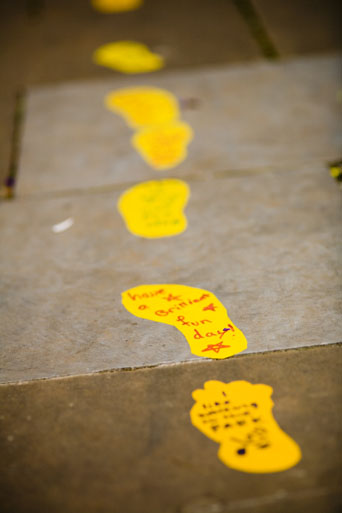1. Set up a campaign group
You will already have a group set up to organise the event, so start with them: organise a follow up meeting to evaluate your Playday event and talk about developing a campaign.
2. Set objectives and goals
Identify the objectives of the campaign – have a clear idea of what you want to achieve and set some specific goals. Do you want to raise awareness or make a specific change in your community?
3. Plan your campaign
When planning a campaign, start by sitting down and considering all of the resources available to you; budget, people and time. Research other campaigns, both locally and nationally, for inspiration and guidance on how to achieve your aims.
4. Identify the timescale
Drawing a simple time line for the campaign’s development will help you to identify what can be done and when. Remember that a campaign for better play provision can be held any time throughout the year but a good starting point would be your Playday event.
5. Identify the budget
How will you fund your campaign? Remember that carefully planned campaigns on a small budget can be just as effective as ones organised on a big budget. Consider fundraising activities – this can bring publicity as well as much-needed funds.
6. Get attention
Utilise local media, use social media, hold a public meeting or demonstration, and of course your Playday event itself! Ask people to sign up to your campaign or pledge to make a difference. Organise something unusual to grab attention and capture people’s imagination. Get everyone involved in your campaign and make sure everyone knows about it. Most importantly, appeal to people’s sense of reason – demonstrate why your cause is important to them, not just to you. Most of all, keep people on side and they are much more likely to support you.
7. Monitor and evaluate
After your campaign, consider its successes and weaknesses to enable you to evaluate its effectiveness. Monitoring and evaluation does not have to be complex or time consuming but should be designed to discover whether the campaign met its original objectives. Involve the whole community in your evaluation, including children and young people, parents and local residents.
Collecting data
Find a simple way to do this. A ‘hands up’ survey in school will give some results but for a campaign to be more effective, recorded verbal and written information will be vital. Consider running a consultation at your event – something like ‘dot voting’ (where you list options for people to put a sticker next to their choice) is a really simple way of gauging opinion. At later stages – a week, a month, a year later – ask the same questions again.
You will need baseline information; something to compare results against. For example: the number of play spaces in your local area, the number of children and young people who use play spaces in your area, the number who would like to do it more often, and the problems that they identify; also the number of parents who feel happy with their children playing in your local area and the concerns that they have.


